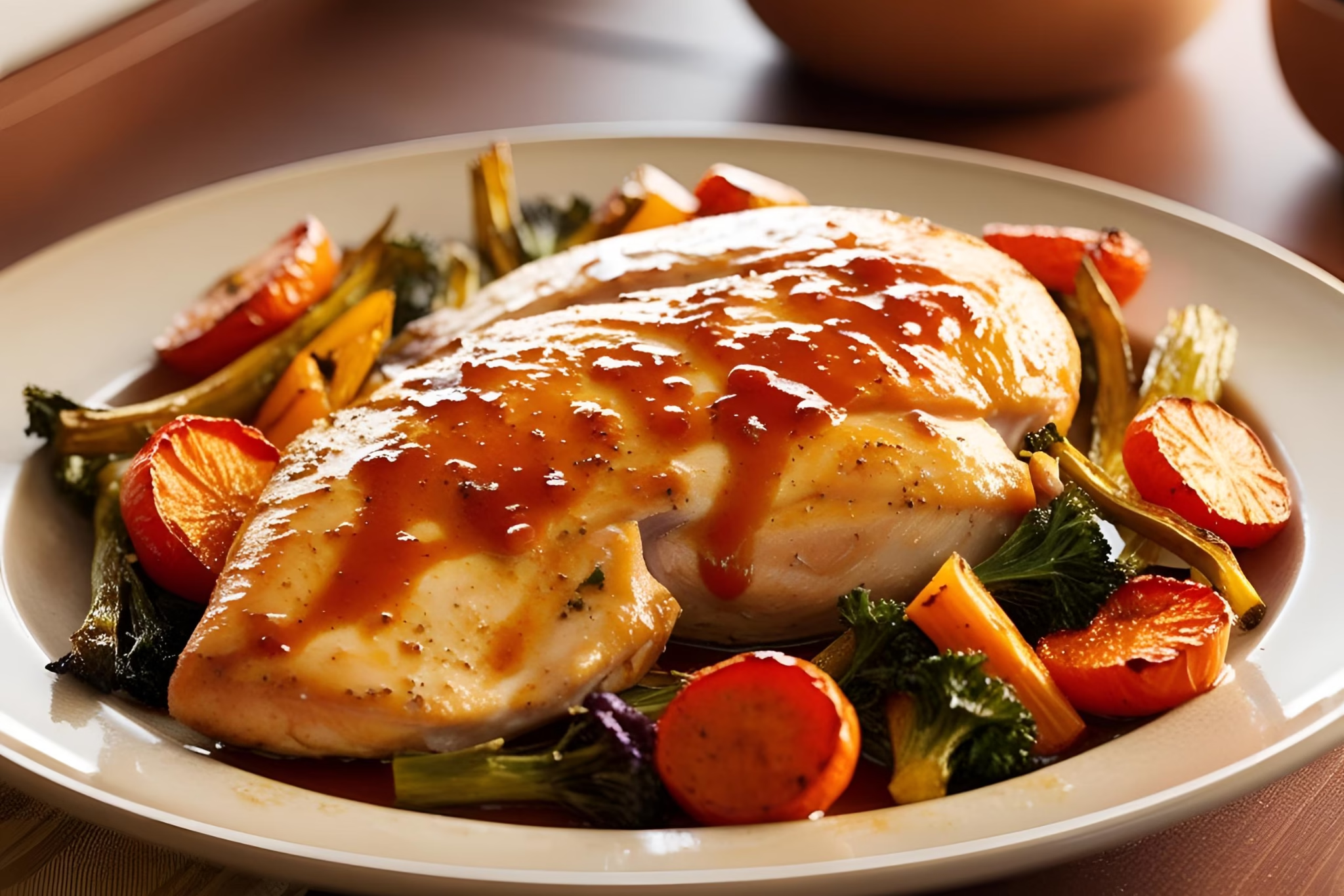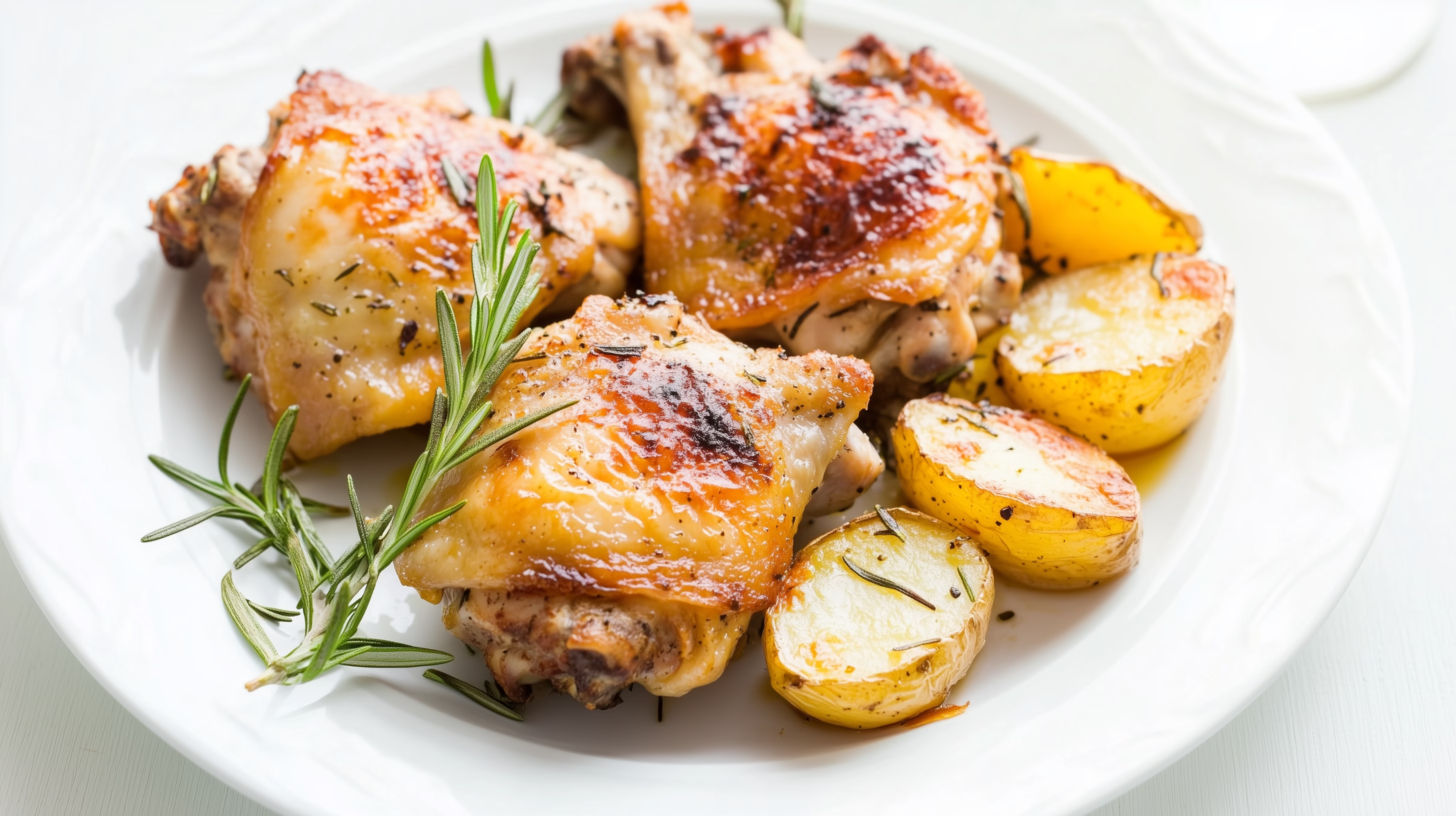Chicken breast. It’s a staple in so many kitchens. Versatile, healthy, and a great source of protein. But let’s be honest, oven-baked chicken breast can sometimes end up dry and bland. Fear not! Today, we’re diving deep into the art of baking chicken breast to juicy, flavorful perfection. Forget dry, rubbery chicken – we’re about to unlock the secrets to consistently delicious results. Get ready to master easy and foolproof oven-baked chicken breast recipes that will become your go-to for quick weeknight dinners and meal prep success.
The Ultimate Guide to Basic Oven Baked Chicken Breast: Juicy Every Time
Let’s start with the foundation – the perfect basic oven-baked chicken breast. This recipe is all about technique and simple seasonings to let the natural flavor of the chicken shine, while ensuring it stays incredibly juicy.
Ingredients for 2 servings:
- 2 boneless, skinless chicken breasts (about 6-8 ounces each), try to choose breasts of similar size for even cooking
- 1 tablespoon olive oil (or any cooking oil you prefer)
- 1 teaspoon salt (kosher salt is recommended, but table salt works too – adjust amount if using table salt as it’s saltier)
- 1/2 teaspoon black pepper, freshly ground
- 1/2 teaspoon garlic powder (optional, but adds a nice savory note)
- 1/4 teaspoon dried herbs (like thyme, rosemary, or oregano – choose your favorite or a mix) – optional for a more herby flavor
Equipment:
- Baking sheet
- Meat thermometer (highly recommended for accuracy)
- Optional: Plastic wrap or resealable bag for pounding
Preparation:
- Preheat your oven to 400°F (200°C). Make sure your oven is properly preheated. This is crucial for even cooking and preventing the chicken from drying out. A preheated oven ensures the chicken starts cooking immediately when it goes in.
- Prepare the chicken breasts: Take your chicken breasts and pat them dry with paper towels. This is a key step! Drying the chicken breast is essential for getting a nice sear and preventing it from steaming in the oven. Excess moisture will hinder browning.
- Pound the chicken breasts for even thickness (Optional but Recommended): If your chicken breasts are unevenly thick (thicker at one end than the other), it’s a good idea to pound them to a more uniform thickness. This ensures they cook evenly. Place the chicken breast between two pieces of plastic wrap or inside a resealable bag. Using a rolling pin or the flat side of a meat mallet, gently pound the thicker parts until the breast is about 1/2 inch thick all over. Don’t pound too hard, you just want to even it out, not make it paper thin. If your chicken breasts are already relatively thin and uniform, you can skip this step.
- Season generously: Place the chicken breasts on a baking sheet. Drizzle them with olive oil, ensuring both sides are lightly coated. This helps with browning and adds flavor. Now, season generously with salt, pepper, garlic powder (if using), and dried herbs (if using). Don’t be shy with the seasoning! Chicken breast is lean and needs proper seasoning to taste flavorful. Rub the seasonings into both sides of the chicken breasts, ensuring they are evenly coated.
- Bake in the preheated oven: Place the baking sheet with the seasoned chicken breasts in the preheated oven. Bake for 20-30 minutes, or until the chicken is cooked through. The exact baking time will depend on the thickness of your chicken breasts and your oven.
- Check for doneness using a meat thermometer: The most accurate way to know when chicken breast is cooked is to use a meat thermometer. Insert the thermometer into the thickest part of the chicken breast. Chicken breast is cooked when it reaches an internal temperature of 165°F (74°C). Avoid overcooking, as this will make the chicken dry. Start checking the temperature around the 20-minute mark and check every few minutes after that.
- Rest the chicken (Crucial for Juiciness!): Once the chicken reaches 165°F (74°C), remove it from the oven and let it rest for 5-10 minutes before slicing or serving. This resting time is absolutely vital for juicy chicken. During resting, the juices redistribute throughout the meat, resulting in a more tender and flavorful chicken breast. Don’t skip this step! You can loosely tent the chicken with foil while it rests, but don’t wrap it tightly as it can steam and lose its crisp exterior.
- Serve and enjoy! After resting, your perfectly baked chicken breast is ready to be sliced and served. It’s delicious on its own, sliced over salads, in sandwiches, or as part of a complete meal with your favorite sides.
Tips and Tricks for Basic Baked Chicken Breast:
- Marinades are your friend: For even more flavor and tenderness, marinate your chicken breasts for at least 30 minutes (or up to overnight in the refrigerator) before baking. Simple marinades like Italian dressing, lemon juice and herbs, or soy sauce and ginger work wonders.
- Don’t overcrowd the baking sheet: Give the chicken breasts some space on the baking sheet. Overcrowding can lead to steaming instead of browning. Use a larger baking sheet or bake in batches if necessary.
- High heat for searing (Optional): For a more pronounced sear and crispy exterior, you can sear the chicken breasts in a hot skillet on the stovetop for 1-2 minutes per side before transferring them to the oven to finish baking. This is an extra step but can enhance the texture.
- Variations on seasonings: Get creative with your seasonings! Try different herb and spice combinations like:
- Italian Herb: Italian seasoning, paprika, onion powder
- Spicy Cajun: Cajun seasoning, cayenne pepper, smoked paprika
- Lemon Pepper: Lemon zest, lemon pepper seasoning, dill
- Serving suggestions: Baked chicken breast is incredibly versatile. Serve it with:
- Roasted vegetables (broccoli, asparagus, carrots, potatoes)
- Salad (garden salad, Caesar salad, quinoa salad)
- Grains (rice, quinoa, couscous)
- Pasta (with pesto, marinara, or creamy sauce)
Flavor Boost: Lemon Herb Oven Baked Chicken Breast
Want to add a bright, zesty twist to your baked chicken breast? This Lemon Herb variation is incredibly refreshing and easy to make.
Ingredients (in addition to the basic recipe):
- 1 tablespoon lemon juice, fresh
- 1 teaspoon lemon zest (zest of about 1/2 lemon)
- 1 tablespoon fresh herbs, chopped (like parsley, thyme, rosemary, or a mix)
Instructions:
- Follow steps 1-3 of the basic recipe.
- In a small bowl, combine olive oil, lemon juice, lemon zest, salt, pepper, garlic powder (if using), dried herbs (if using), and fresh herbs.
- Pour the lemon herb mixture over the chicken breasts on the baking sheet, ensuring they are evenly coated.
- Follow steps 5-8 of the basic recipe for baking and resting.
Tips and Tricks for Lemon Herb Chicken Breast:
- Use fresh lemon zest and juice: Freshly squeezed lemon juice and zest provide a much brighter and more vibrant flavor than bottled juice.
- Pair with Mediterranean sides: Lemon herb chicken breast pairs beautifully with Mediterranean-inspired sides like roasted vegetables with feta cheese, Greek salad, or couscous with olives and sun-dried tomatoes.
Flavor Boost: Garlic Parmesan Oven Baked Chicken Breast
For a richer, more savory flavor, try this Garlic Parmesan baked chicken breast. The parmesan creates a delicious cheesy crust that’s simply irresistible.
Ingredients (in addition to the basic recipe):
- 1/4 cup grated Parmesan cheese, finely grated
- 1 teaspoon garlic powder (you can use 1/2 teaspoon in the basic seasoning and add another 1/2 teaspoon here for extra garlic flavor)
Instructions:
- Follow steps 1-4 of the basic recipe.
- In a small bowl, combine grated Parmesan cheese and garlic powder.
- Sprinkle the Parmesan mixture evenly over the top of the chicken breasts on the baking sheet, pressing lightly to help it adhere.
- Follow steps 5-8 of the basic recipe for baking and resting.
Tips and Tricks for Garlic Parmesan Chicken Breast:
- Use finely grated Parmesan: Finely grated Parmesan cheese will melt and create a better crust than coarsely grated Parmesan.
- Broil for extra crispiness (Optional): For an even crispier Parmesan crust, you can broil the chicken breast for the last 1-2 minutes of baking. Watch it closely to prevent burning!
- Serve with Italian-inspired dishes: Garlic Parmesan chicken breast is fantastic with Italian-inspired sides like pasta with marinara sauce, creamy risotto, or roasted vegetables with Italian herbs.
Baked Chicken Breast: Your Kitchen Superstar
Oven baked chicken breast is truly a kitchen superstar. Mastering these simple techniques and recipes will transform your weeknight dinners and meal prep game. With endless flavor variations and its incredible versatility, you’ll find yourself reaching for this healthy and delicious protein again and again. Enjoy experimenting and creating your own signature baked chicken breast dishes!




